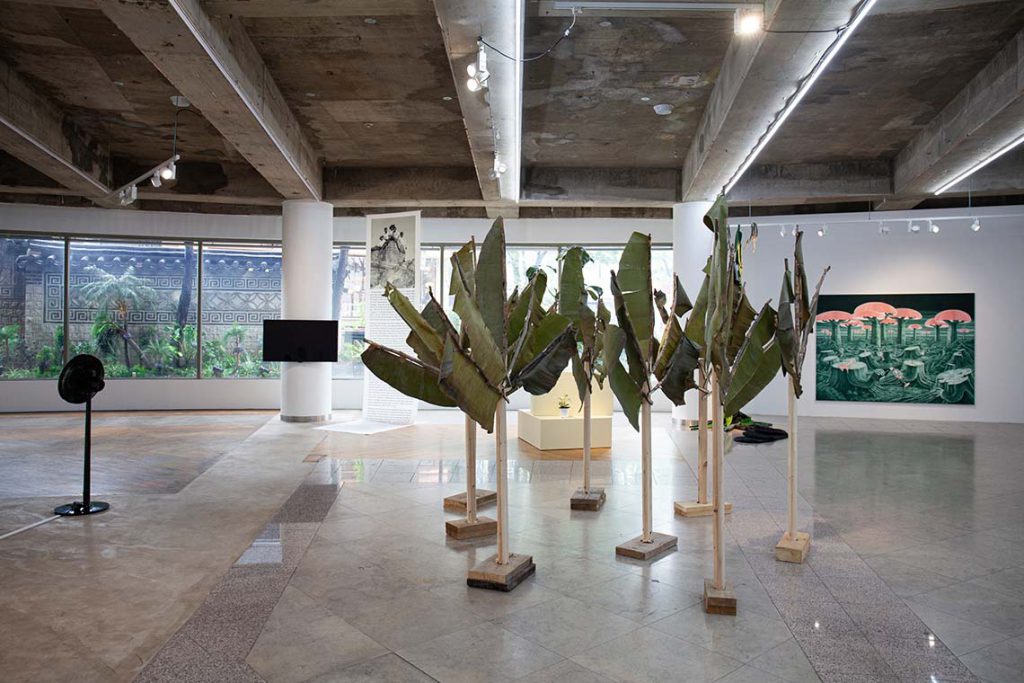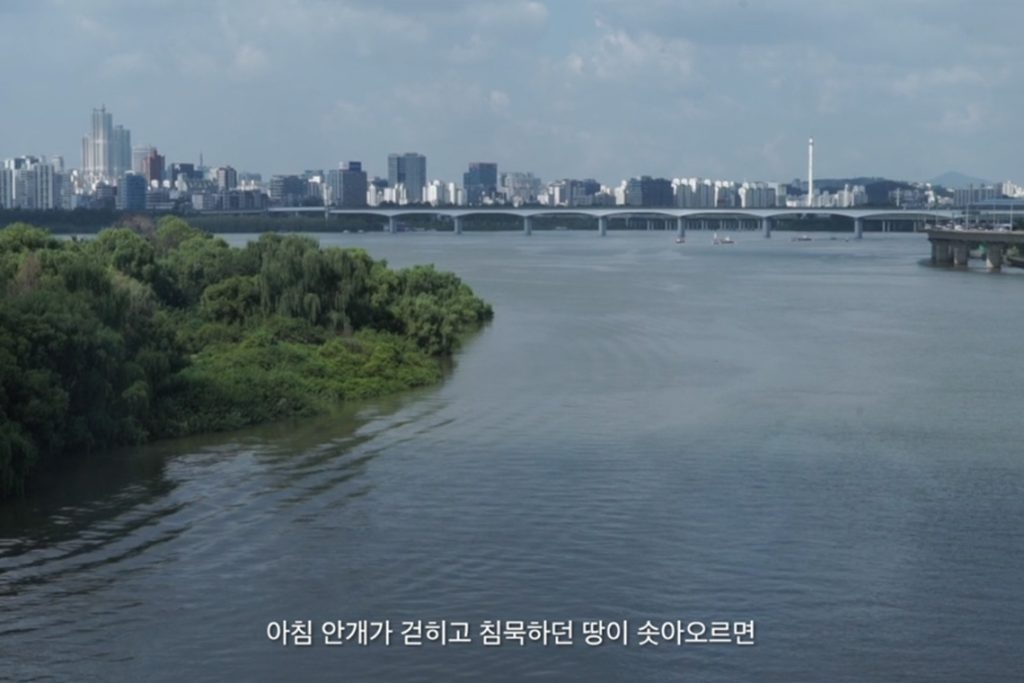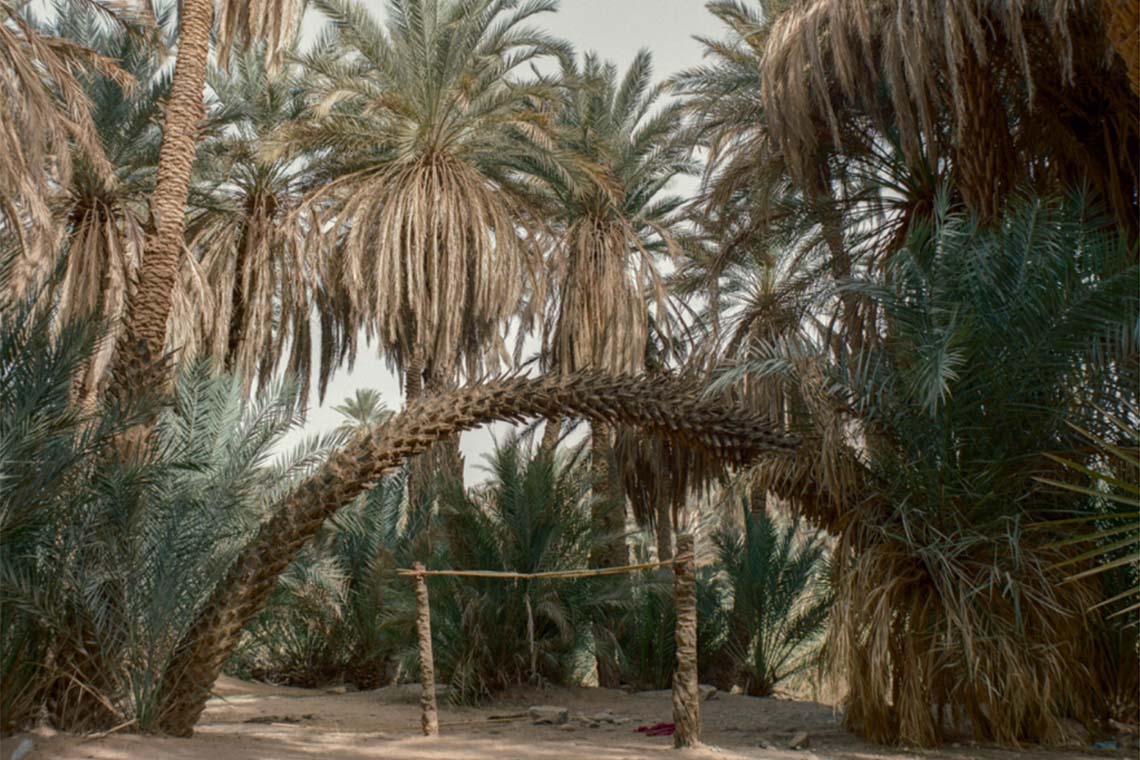Tired Palm Trees, a group exhibition curated by Elisabeth Piskernik and Markus Waitschacher at Art Sonje Center, taps into the image of palms as symbols of serenity and twists it around to explore the destructive impact humans have had on their surrounding environments.
As I begin to write this review at a café near Gwanghwamun Square in Seoul, I’m accompanied by a small potted plant at my table whose verdant leaves offer a sense of calm amidst the chatter around me. In the leisure spaces of bustling cities like Seoul, plants are deployed to create moments of peace away from the frenetic pace of the city.
Given this expectation of plants, an art exhibition full of palms that are stressed and tired comes as a surprise. Organised by Art Sonje Center, a contemporary art institution located in the heart of Seoul, in collaboration with the Rabat-based Le Cube – independent art room, Tired Palm Trees subverts the traditional image of palm trees as symbols of respite to reveal their exploitation by humans. The exhibition is the third edition following previous iterations held at Pavelhaus in Austria (2019) and Le Cube – independent art room (2022).
Across the quarter-circle-shaped venue, palms and their fellow plants wither, droop and sway. Facing the entrance is Victor Cruz and Hugo Portillo’s Tropical sculptures: the possibility of impossibility (2024), a haphazard collection of palm tree-like sculptures. Lacking the majestic height of living palms, the stand-ins face visitors at eye level, inviting a closer look – which reveals wilting banana leaves, found branches and plywood pieces precariously held together with tape and nails. While described as “attempt[s] to improvise memories of [El Salvador and the] Global South,” the work performs a different role in the exhibition space. Apart from visualising the show’s title, the purposefully crude mixture of natural and industrial materials brings attention to the constructed nature of Seoul’s built environment, which is visible through the large window at the back of the venue. The sculptures’ rotting leaves, nails and plywood scraps open up questions about what gets discarded when constructing urban environments that strike a neat balance between natural and manmade elements.

The human desire to control and shape nature is amplified in Regula Dettwiler’s delicate watercolours of artificial plants, Efeutute made in China (2014), and site-specific installation, Top Performers (2024), on either side of Cruz and Portillo’s installation. The latter consists of potted houseplants placed on white display stands resembling those found in commercial stores. The leaves of each plant are embellished with laces, pointing to the willingness of humans to artificially enhance nature for aesthetic pleasure.
Works throughout the exhibition present palms from various geographies, distressed by mankind’s exploitative practices. Roswitha Weingrill’s saggy fabric palms speak of extreme weather events – like hurricanes in Florida – that are exacerbated by climate change and threaten the very existence of the palm family, while Seif Kousmate’s photographs from the Waha series (2020–24) compose a deteriorating oasis due to unsustainable agricultural practices and frequent droughts. On the other hand, Katrin Ströbel’s drawing-based installation Ile de Gorée (2011) depicts the silhouetted palm-fringed scenery of the eponymous island off the coast of Dakar, Senegal. Seemingly tranquil, the island is also where “many enslaved people were shipped from the African continent to the Americas” – a fact that sensitises visitors to the reality of violent histories embedded in delightful landscapes.
Geographic heterogeneity runs the risk of reducing the exhibition to an exotic spectacle, especially when its main imagery evokes distant places. Mi Jung Shin’s installation Bam Island: Archives of Drifting Images Vol. 1 (2022) addresses this concern. Archival footage, photographs, and maps of Bam Island – located in the Han River of Seoul – are woven into a haunting film that traces the island’s destruction in the late 1960s during the city’s urban development; resurfacing in the late 1980s; and status today. Shin’s work illuminates how the human desires that once destroyed Bam Island for urban expansion are the same as those that fuel the suffering of plants in other parts of the world. As its gentle spoken words resonate across the exhibition space, the film relates the other works in the show to the local context.

While plants have been subjected to humans’ extractive practices, considering them as passive objects would be a mistake. As a force of nature, plants resist and retaliate in their own ways – as demonstrated by other works in the exhibition. The houseplants in Dettwiler’s installation will liberate themselves from the laced adornments as they continue to grow throughout the show’s duration. The plastic palms in Edith Payer’s Pietà (2024) poke fun at a narrative that has long shaped the Western world, as they have replaced the bodies of holy figures as icons of eternity. The cut-down trees in Jongwan Jang’s I Prefer White Wine (2024) violate the human expectation of plants to provide comfort, as they carouse, smoke and cuddle with each other. Rendered in garish pink and green, the painting is eerie and comical, sci-fi-esque and kitschy, all at once.
In a city where palm trees are a rare sight, the exhibition’s focus on palms to explore the relationship between humans and flora is deeply intriguing. Some works – like those by Shin and Kousmate – carry nuance and tenderness that fulfill the exhibition’s aim of “creat[ing] an empathetic view of our environment,” as articulated by the curatorial statement. For its compelling aspects to stay and matter, Tired Palm Trees would benefit from organising public programmes that translate its themes into actionable initiatives. The show alone, while well-intentioned, risks reducing its message to mere entertainment amidst a proliferation of ecology-themed art exhibitions.



